Samsung NX10 Review
Samsung NX10
Samsung's mirrorless system camera challenges the Panasonic G Micro
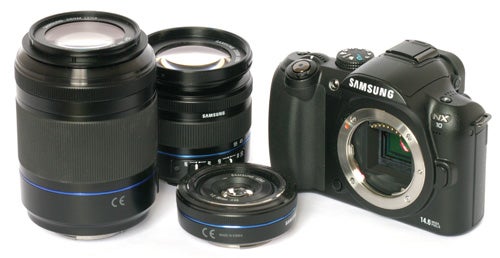
Verdict
Key Specifications
- Review Price: £489.99
 (centre)
(centre)
Best DSLR and System Camera(/centre)
When Panasonic launched the Lumix G1 at the end of 2008, it was the first of a new type of camera, so new in fact that the industry and the journalists who write about it have yet to agree on the taxonomy of the species. Some prefer “interchangeable lens compact”, which is far too difficult to pronounce after a couple of pints, a crucial problem for the aforementioned camera journalists. Only slightly less cumbersome is “mirrorless system camera”, which is more general and therefore more useful. We’d better all agree on a name soon, because it looks like there are going to be a lot more of them around. Olympus is enjoying some success with its stylish Pen series, and now Samsung has decided to get in on the act with the launch of its new NX10 camera and a selection of lenses and accessories.
There is one crucial difference between the NX10 and its two market rivals. While both Olympus and Panasonic use the smaller Micro Four Thirds sensor in their cameras, the Samsung NX10 uses a 14.6 megapixel APS-C CMOS sensor, the same size as the majority of conventional digital SLRs. In theory this could give the NX10 a significant advantage in picture quality, with the possibility of superior dynamic range and low-light performance. It’s certainly no disadvantage in terms of size and weight. The NX10 measures 123 x 87 x 39.8mm (body only), and weighs 413g including battery and memory card. This compares favourably with the 124 x 83.6 x 74mm and 432g of the new Panasonic G2 (review coming later this week). Samsung has achieved these compact dimensions in the same way that Panasonic has, by eliminating the bulky reflex mirror and replacing the optical pentaprism viewfinder with an electronic LCD viewfinder.
Samsung has priced the NX10 very competitively. The starter kit comprising the camera and a very nice 18-55mm f/3.5-5.6 standard zoom lens with optical image stabilisation (OIS) is currently available for around £490. Panasonic’s recently-launched Lumix G10 entry-level model is crucially slightly more expensive at £500 (£600 in some places) for the 14-42mm starter kit, while the new Lumix G2 kit price is around £700. The original G1 is still available for around £350 with the older 14-45mm kit lens, but probably not for too much longer. The Olympus Pen E-P1 kit is around £500, while the newer Pen E-P2 viewfinder kit price is around ££825.
Samsung has developed a new lens mount for the NX system, with an internal diameter of approximately 42mm, smaller than the 48.5mm of the Pentax K mount used on its previous full-sized DSLRs, and only a little larger than the 41.5mm of the Micro Four Thirds mount used by Panasonic and Olympus. As a result the NX system lenses can be very compact, and the standard kit lens isn’t much bigger or heavier than the Panasonic 14-42mm image-stabilised lens accompanying the Lumix G2 and G10. Currently available NX lenses include a 30mm f2 pancake lens (equivalent to 45mm with the 1.5x conversion factor) priced at around £220, and a 50-200mm image stabilised f/4-5.6 telephoto zoom for around £170, which is the same size as a standard APS-C lens and looks very bulky on the tiny NX10 body. Both of the currently available zoom lenses have built-in OIS (Optical Image Stabilisation), with switches for this and the autofocus mounted on the side of the lens barrel.
A further five lenses for the NX system were recently announced; a 20-50mm f/3.5-5.6 compact zoom, a 20mm wide-angle pancake lens, an 18-200mm f/3.5-6.3 OIS superzoom, a 60mm f/2.8 macro lens and a presumably cheaper non-OIS 18-55 f/3.5-5.6 standard zoom. These will, according to Samsung, become available before the end of the year.
Unlike previous Samsung DSLRs, which have been produced in partnership with Pentax, the design of the NX10 is all Samsung’s own work. It follows the conventional DSLR shape but scaled down in all dimensions, with a small but comfortable rubber-coated handgrip, a pop-up-flash on the viewfinder turret, and a chunky knurled dial for shooting mode selection.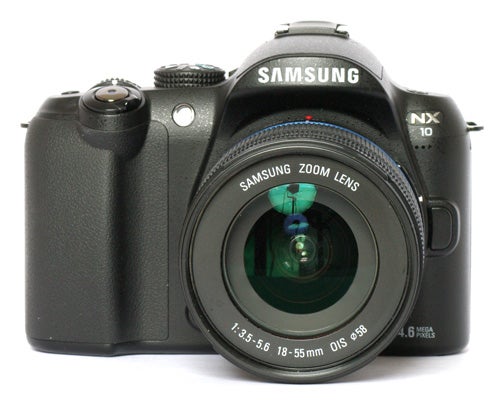
The overall build quality is excellent, and although the body is made of plastic it feels very strong. Externally the camera is very well finished, with very close panel joins and spring-loaded hatches with strong hinges. Unlike the Panasonic G2 it has a separate metal-hinged hatch for the memory card positioned on the side of the camera, for easy access when using a tripod. The tripod bush is metal and positioned in the ideal location directly under the centreline of the sensor. All the controls are solidly mounted and clearly labelled, and operate with just the right amount of tactile feedback.
The controls are sensibly placed for easy operation, with separate buttons for exposure lock, exposure compensation and drive mode placed close to the thumb grip, and a single control wheel mounted just behind the shutter button. Samsung has paid rather more attention to the ergonomics than it sometimes does with its compact cameras, and the NX10 is well balanced and comfortable to hold despite its compact size. Even with the big 50-200mm zoom fitted it handles well. There’s no question that the NX10 is a very nice little camera. It looks and feels like what it is: a tiny little fully-functional DSLR. If I didn’t have a Y chromosome I might describe it as adorable.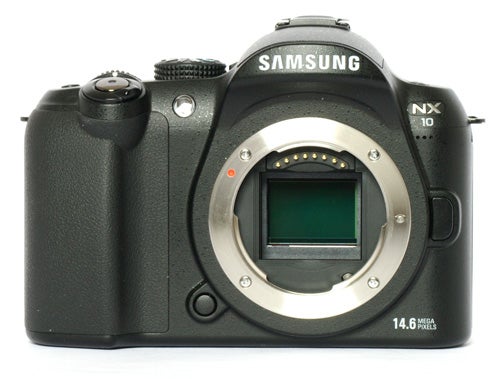
One of the NX10’s highlight features is its superb 7.5cm (3.0 inch) AMOLED monitor, which with a resolution of 614,000 dots is one of the sharpest on any camera. AMOLED (Active-Matrix Organic Light-Emitting Diode) technology has a number of advantages over the conventional LCD display. It is self-illuminating, and so doesn’t require the LCD’s power-hungry back-light; it is lighter, stronger, sharper, better contrast, has a faster refresh rate and is cheaper to manufacture. AMOLED screens have started to appear on a number of high-tech devices including some of the latest smartphones, and will very likely eventually replace LCD for most display applications. The AMOLED monitor on the NX10 is so sharp it is literally impossible to see the individual pixels, and is very bright and clear even in strong sunlight, although any fingermarks on the reflective plastic cover can cause daylight visibility problems.
The NX10 has an electronic LCD viewfinder which is also exceptionally sharp, with a resolution of 920,000 dots. It replicates the display on the monitor, and a proximity sensor mounted just below the eyepiece automatically switches the display from the monitor to the viewfinder when the camera is held up to the eye. Despite its huge resolution the viewfinder display isn’t quite as clear as the monitor, and the individual dots are visible. It’s not really sharp enough for manual focusing, and it has no magnification to check focus, surely an easy feature to implement on and EVF. Compared to the flawless field-sequential display viewfinder of the Panasonic G2 it does look a bit weak. The refresh rate isn’t as fast as the monitor, and it doesn’t handle high-contrast scenes as well either, burning out highlights and losing details in shadow areas. The eyepiece has dioptric adjustment to compensate spectacle wearers, but the adjustment dial is fiddly and difficult to set accurately.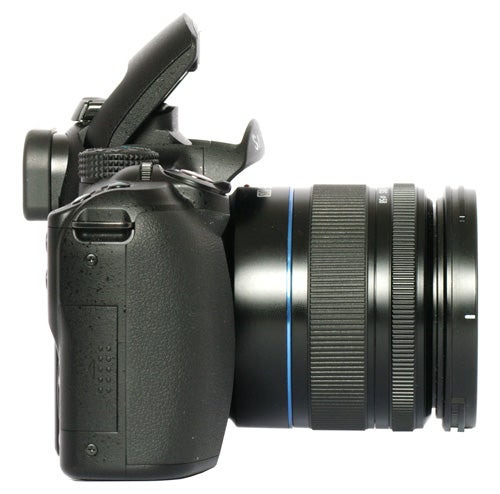
As is usually the case with the first model of an entirely new line of cameras, the NX10 is better equipped with useful features than most entry-level models, and is roughly on a par with a mid-range DSLR. One of the most useful features is the Picture Wizard function, which is more or less identical to Canon’s My Colours features, found on nearly all of that company’s cameras. Operated by a dedicated button it provides a range of tone pre-sets, each of which can be individually customised with contrast, saturation, sharpness and tone. Similarly the white balance pre-sets can be adjusted using a 2D colour temperature chart, and it also has both manual and dial-in colour temperature settings.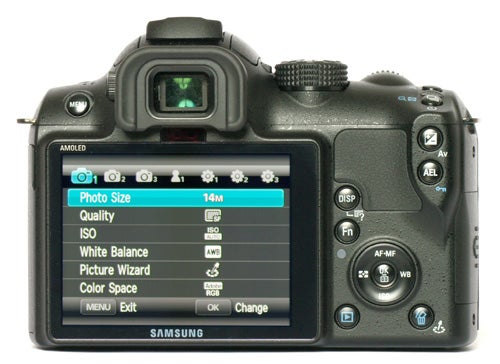
Other useful additions include an adjustable self-timer with a delay from two to 30 seconds, although there is no interval timer or ability to take multiple timer shots. The camera also has several auto-bracketing options, including fully adjustable exposure and white balance bracketing, and also Picture Wizard bracketing, which can take three pictures using different tone presets. Thanks to the superb monitor the visual interface for all of these options is extremely clear, with a combination of menu and graphical control interfaces. There is also an on-screen function menu for the most common shooting options, however it would have been nice if this too could be customised.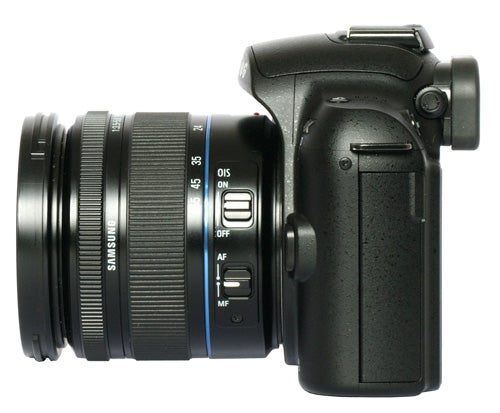
The NX10 has the obligatory HD video recording mode, but it is not one of its best features. It records in MP4 format at a maximum resolution of 1280 x 720 at 30 fps with mono audio. There are a number of menu options in video mode including Picture Wizard, exposure, white balance, metering and AF options, and audio options including wind cut and fader, but it has to be said that the audio and video quality are not brilliant, and it does suffer badly from the notorious CMOS “Jello Effect”, in which the video image wobbles if the camera is panned quickly.
The NX10’s performance is good, but . In single shot mode it has a shot-to-shot time of 1.2 seconds, while in continuous shooting mode it can maintain a shooting speed of 2.5 frames a second for about 15 shots with a standard class- 6 SD card, or up to 28 shots with a faster class 10 card. It also has a burst mode which can shoot at 30fps but only at a resolution of 1.4 megapixels.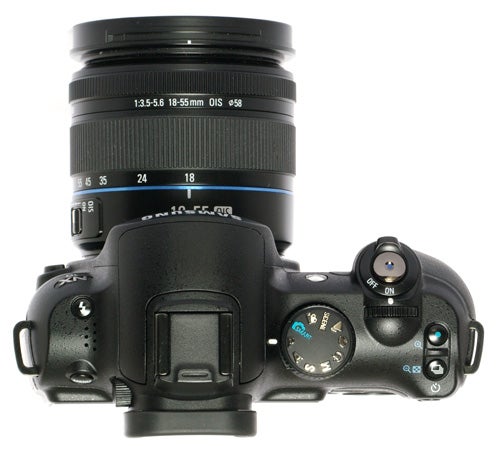
The NX10, like its rival s from Olympus and Panasonic, uses a contrast detection autofocus system, but it is a particularly good one. It has several modes, with 15-zone multi-point or single selectable point. It focuses very quickly and accurately in good light, with performance comparable to a standard DSLR, and is also pretty good in low light, performing approximately as well as the more expensive Panasonic G2 in similar circumstances. It has an AF assist lamp, but the effective range is only about two metres.
Where the NX10 really scores is its overall image quality, which is absolutely superb. The standard zoom kit lens is particularly good, with flawless edge-to-edge sharpness and no trace of chromatic aberration. The 30mm pancake lens is even better, and even the relatively cheap 50-200mm telephoto zoom produces good results, with no image distortion even at maximum zoom. Shooting in Raw mode and converting the images using either the supplied software or Adobe DNG converter produces a level of detail comparable to a good full-sized DSLR of similar resolution. Colour rendition is excellent, and dynamic range is also better than average. Automatic metering is very reliable, and copes well with unusual lighting.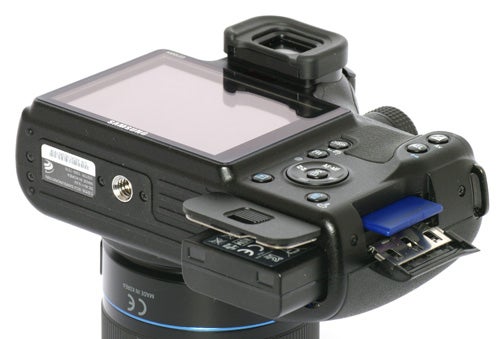
Image noise control is also very good, producing reliably noise-free images at 400 ISO and usable images at 800 ISO in quite low light, although performance at 1600 ISO leaves something to be desired. It’s not going to convince anyone to trade in their EOS 7D just yet, but for a sub-£500 camera it produces excellent results. As for the crucial question of whether or not it produces better image quality than a comparable Four-Thirds camera, I would have to say that yes it does. The margin isn’t wide, but detail, colour depth and dynamic range are visibly superior.
”’Verdict”’
In the NX10 Samsung has achieved something remarkable, a real alternative to a full-sized APS-C DSLR with all the features, performance and picture quality in a lightweight and compact package smaller than some super-zoom cameras. For a surprisingly low the price the NX10 is a great little camera, and a very serious competitor to the Micro Four Thirds systems.
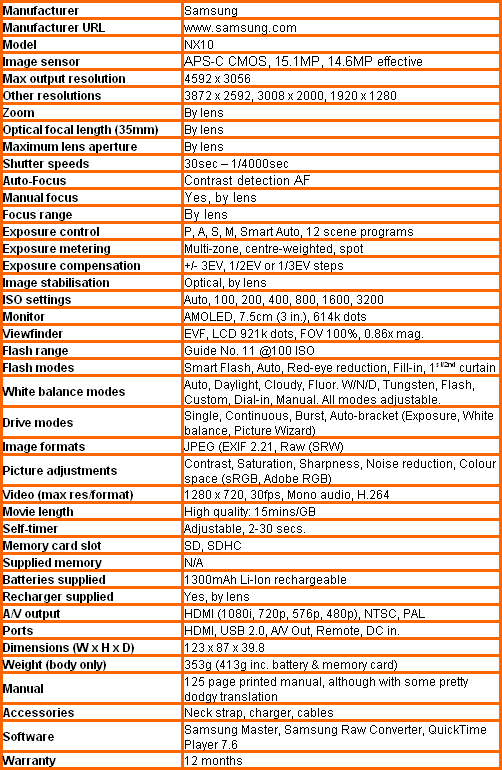
”Over the next few pages we show a range of test shots. On this page the full size image at the minimum and maximum ISO settings have been reduced to let you see the full image, and a series of full resolution crops have taken from original images at a range of ISO settings to show the overall image quality. These pictures were taken indoors using high intensity tungsten light.”
—-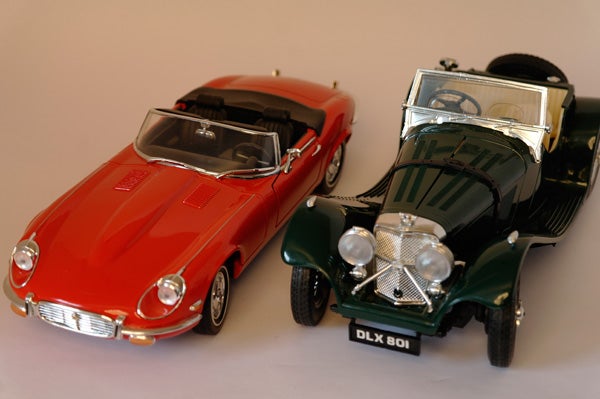
This is the full frame at 100 ISO.
—-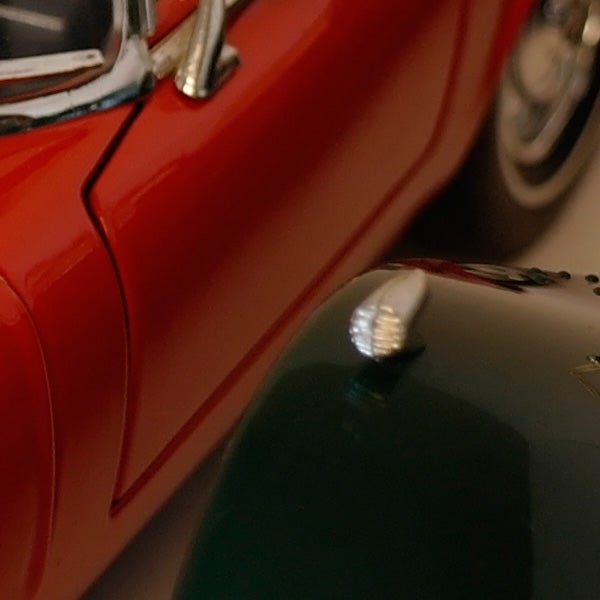
Image quality at 100 ISO is superb, with smooth noiseless colour.
—-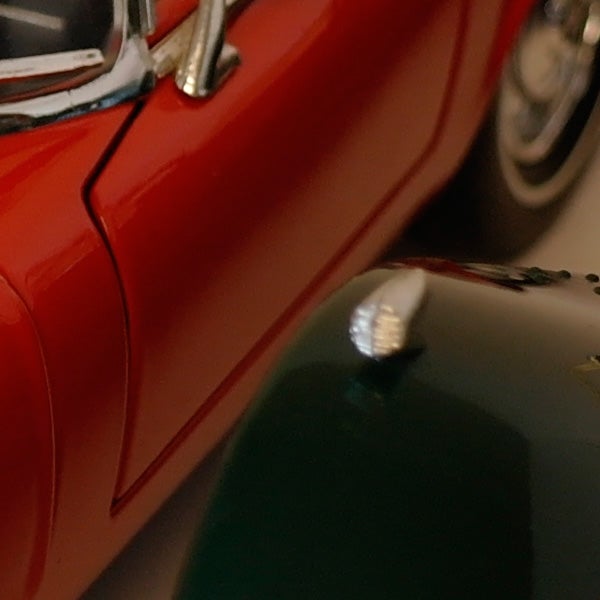
Very similar results at 200 ISO.
—-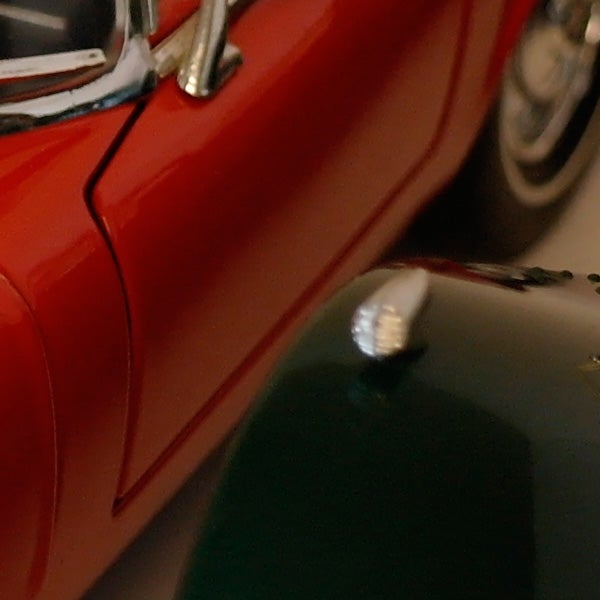
Image quality at 400 ISO is still very good.
—-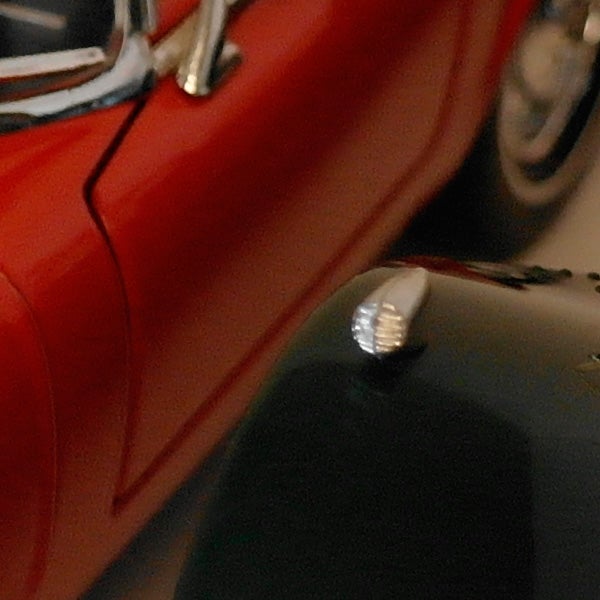
Some image noise is creeping in at 800 ISO, but the results are still printable.
—-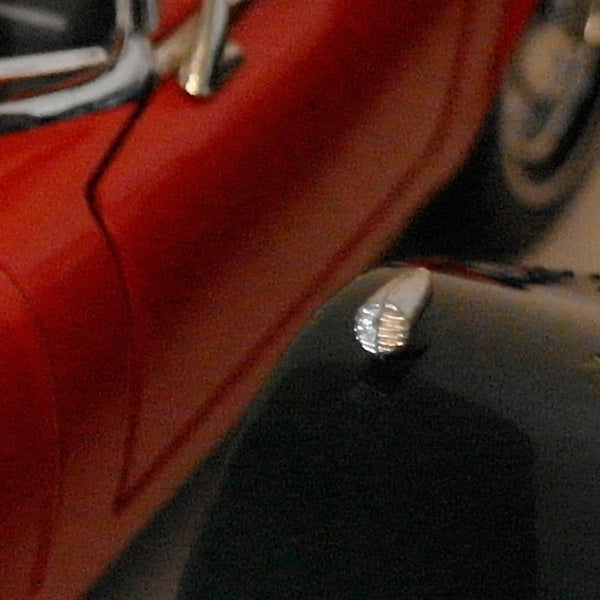
The image quality at 1600 ISO is much worse.
—-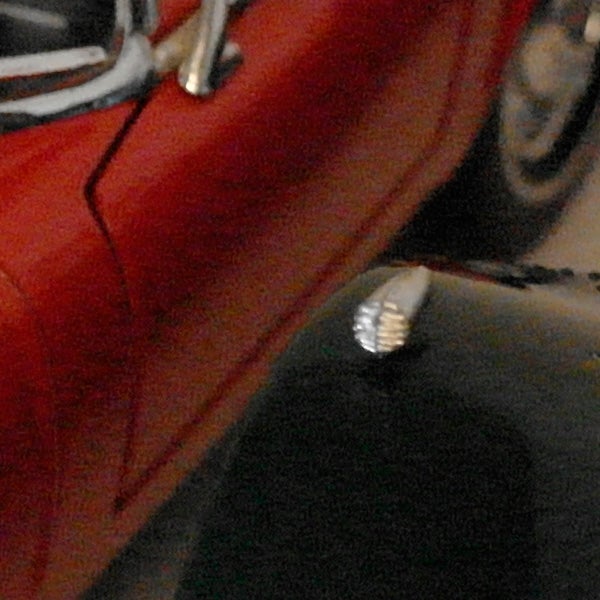
3200 ISO and the quality is really bad, but to be not many similarly priced DSLRs do much better.
—-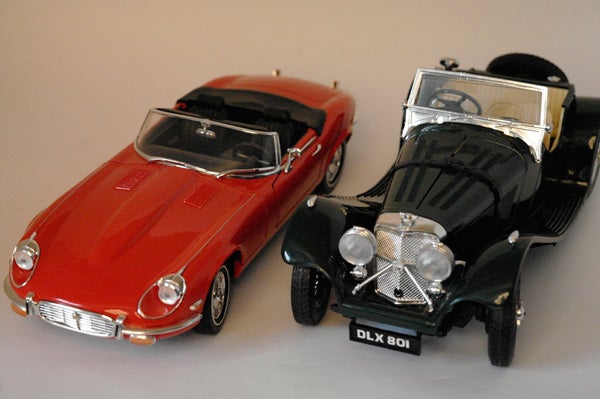
This is the full frame at 3200 ISO.
—-
”A range of general test shots are shown over the next two pages. In some cases, the full size image has been reduced for bandwidth purposes, and a crop taken from the original full resolution image has been placed below it to show the overall image quality. Some other pictures may be clicked to view the original full-size image. ”
—-
Here’s my usual DSLR test shot of Sidmouth seafront for comparison with other cameras. Click on the image to download a full-size version, but be aware that the file is 7.3MB.
—-
Compare the level of detail in this crop with some mid-range DSLRs such as the 18MP EOS 550D, or the 12.3MP Sony Alpha A500 or Nikon D5000. As you can see it acquits itself very well indeed.
—-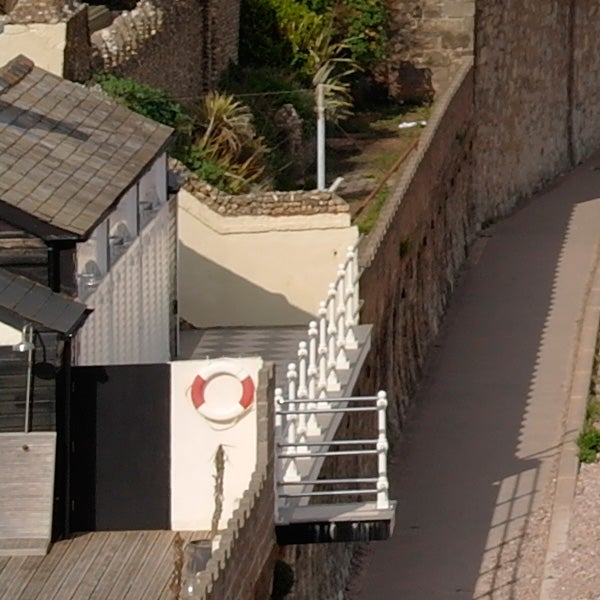
This crop from the edge of the above frame shows the excellent edge-to-edge quality of the Samsung 18-55mm kit lens.
—-
”Here are some general test shots to help evaluate the camera’s overall image quality, including dynamic range, colour rendition and the zoom range of the lens. Some pictures may be clicked to download the full size original image. ”
—-
The dynamic range and exposure metering are excellent.
—-
Colour rendition is bright and well saturated, with excellent gradation.
—-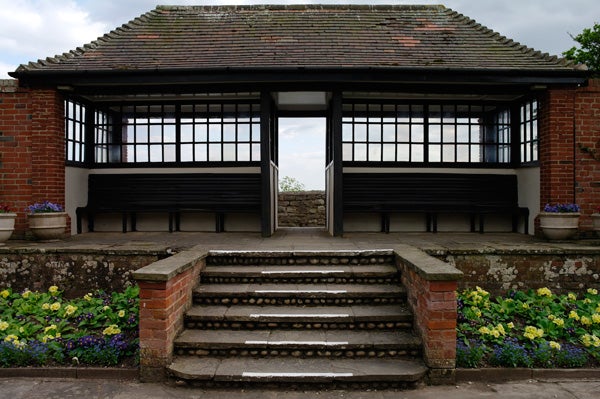
There is a slight amount of barrel distortion at the wide-angle end of the zoom range.
—-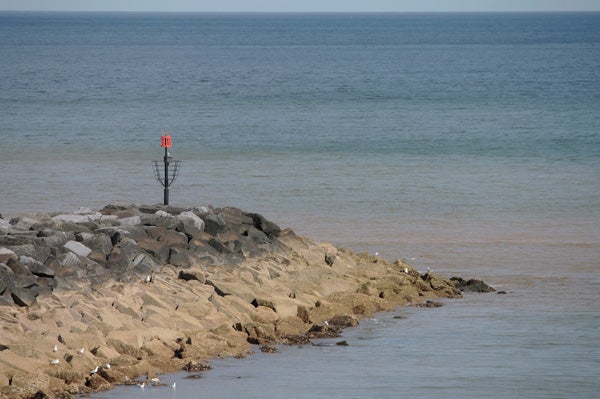
The horizon is perfectly straight in this shot taken at the longest end of the 50-200mm telephoto zoom.
—-
Low light performance is also very good.
—-
Spring is here at last, which makes my job a lot easier.
—-
Trusted Score
Score in detail
-
Value 9
-
Image Quality 9
-
Build Quality 9
Features
| Camera type | Mirrorless Camera, Digital SLR |
| Megapixels (Megapixel) | 14.6 Megapixel |
| Optical Zoom (Times) | 3.1x |
| Image Stabilisation | Optical |
| LCD Monitor | 3 in |
| Flash modes | Auto Flash, Flash OFF, Flash ON, Red-eye Reduction |
| Video (max res/format) | 1280 x 720, 640 x 480 |
| Memory card slot | Secure Digital (SD) Card, Secure Digital High Capacity (SDHC) Card |

